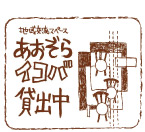The Movement by Air Pollution Victims Against the Mizushima Industrial Complex, a New Industrial City
by Terutomo Ota
Director, Association of Kurashiki Pollution Victims and Their Families
1. Introduction
Air pollution at Mizushima arose in the 1960s when operations began at a large industrial complex at Mizushima Nada, an area that had been quiet farming and fishing villages. Construction had begun in the 1950s, with one company quickly followed by another, and including everything from electric power and petrochemicals to steel, automobiles, shipbuilding, and foods. Until the mid-1970s operations expanded quickly, which caused asthma and other health damage by their enormous smoke emissions.
In the latter half of the 1960s, air pollution advisory notices and warnings were issued almost daily, and in February of 1969 the area was blanketed daily by killer SO2 concentrations of 0.42, 0.43, and 0.32 ppm, which caused the aged, children, and many other citizens to endure sudden respiratory paroxysms.
2. Activities by Pollution Victims at Mizushima, Kurashiki City
(1) Meetings of pollution victims
Meetings have been held several times since June 1969.
(2) Beginning of study meetings on “air pollution and health”
April 1971
(3) Launching of Preparatory Group for Pollution Victims Association
1972: Preparatory Group negotiates with city regarding certification of pollution-caused diseases and help with medical care expenses.
Kurashiki City implements Ordinance on Benefits for Payment of Medical Expenses for Certain Respiratory Tract Disorders.
Kurashiki City Pollution Illness Friends Association organized (activities conducted to bring ordinance-certified pollution victims into the Friends Association).
Victory in the Yokkaichi Pollution Lawsuit.
(4) Pollution-Related Health Damage Compensation Program instituted
1973: Requests made to director-general of Environment Agency include certification for pollution-induced illnesses, controls on pollution sources, and compensation for living expenses.
Green School opens.
October: Pollution-Related Health Damage Compensation Program is instituted.
Second general meeting of Kurashiki City Pollution Illness Friends Association.
National Liaison Council for Pollution Victims Organizations is formed.
Petitions are made to City Council and Prefectural Assembly to have the Mizushima area designated under the Pollution-Related Health Damage Compensation Law.
Petitions and requests made to Environment Agency director-general, to the presidents of the House of Councilors and the House of Representatives, and to all political parties.
3. The Movement to Establish a Program for Redress
In 1969 the Law on Special Measures Concerning Redress for Pollution-Related Health Damage became effective, and in 1974 the Pollution-Related Health Damage Compensation Law took effect. Pollution victims in Mizushima also made repeated appeals and petitions to the prefecture, city, and Environment Agency for the application of this law, but the mayor stubbornly refused to accept them. In response to this, support came from the democratic groups including Make Business Responsible for Totally Compensating Pollution Victims!, Citizens Pollution Control Association, and Society for Eliminating Pollution. Pollution victims and their supporters carried out a grim battle, but as the application for designation had been delayed, Kurashiki City was too late for the Compensation Law’s implementation, and became just an area to be studied. In the latter half of the 1970s, business came up with even cleverer policies for conciliating the populace, and promoted its cause with the phrases “You can’t have jobs without pollution,” and “Business supports the citizens.” As the bitter citizen-business clash continued, the mayor and City Council decided to approve designation of the area, and in December 1975 the Environment Agency issued an official notice that the locality had been designated.
4. Resistance to Backsliding
Every year since 1976 citizens have held a “National Day of Action for Pollution Victims,” which will be held for the 20th time this year. Beginning next year a new initiative is being considered.
In 1978 the Environment Agency pushed aside fierce citizen opposition to relax the environmental quality standard for nitrogen dioxide, and Kurashiki City aligned itself with this action by making a secret agreement with the polluting companies and abolishing the “Kurashiki City Ordinance on Benefits for Payment of Medical Expenses for Certain Respiratory Tract Disorders” in defiance of citizen wishes.
Pollution victims sought a dialog with the polluting companies. They asked the companies to meet them, but were curtly brushed off. Because of continued scheming to cancel the regional designations under the Pollution-Related Health Damage Compensation Law, the only avenue left open to Kurashiki’s pollution victims was litigation. They exercised this lone option in November 1983 by filing a lawsuit against eight large Mizushima companies.
5. Trusting in Victory and the Future
In March 1994 the citizens won a landmark court victory, but the case is pending in a high court. In March 1995 the Nishiyodogawa pollution lawsuit was resolved by finding the defendant companies responsible for pollution damage, and making them pay compensation that included a fund for redevelopment of the area. In July another Nishiyodogawa lawsuit found that motor vehicle exhaust is the cause of health damage. The Supreme Court found that the government is responsible for pollution from national highways, and ordered redress for the victims. Pollution victims have made unfailing progress in winning victory after victory. Though it may take time, justice will always prevail.







